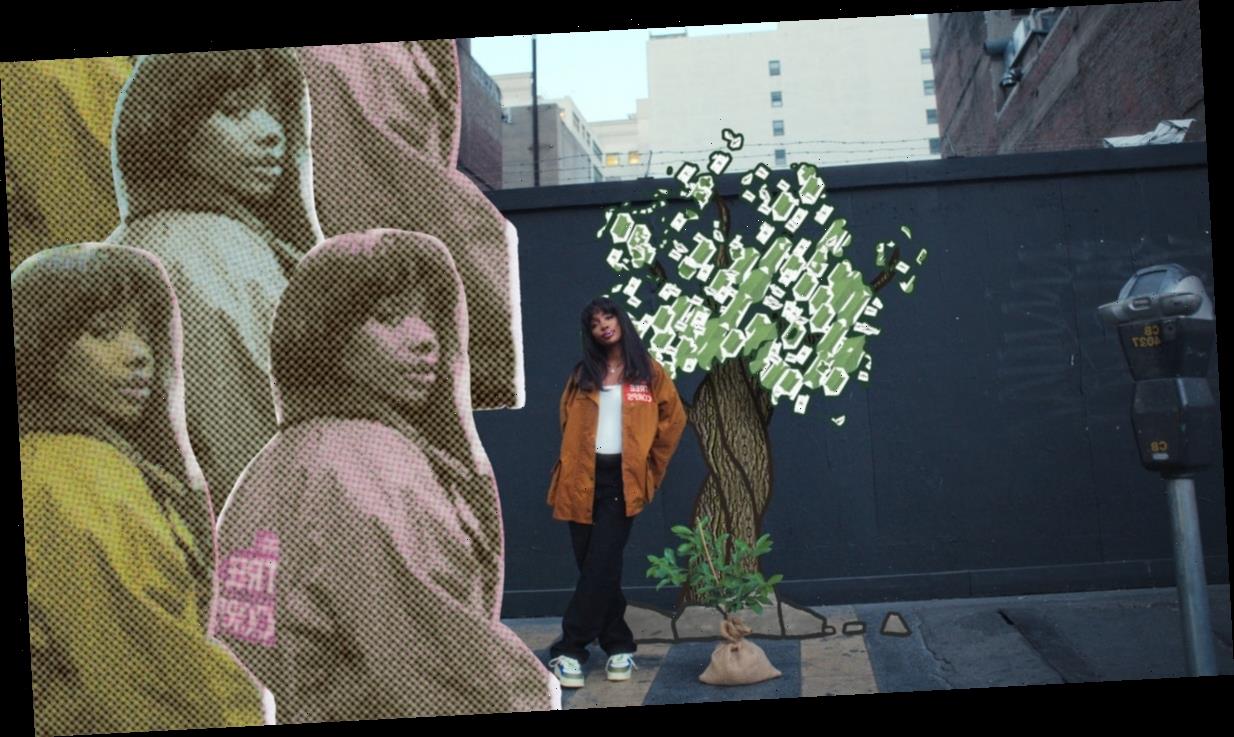For Grammy-nominated singer, songwriter, and musician SZA, addressing climate justice is deeply personal. “America is probably one of the only places that makes climate change [seem] super separate from your day-to-day reality,” she says, noting how Americans in wealthy, pollution-free areas can distance themselves from the harshest effects of a troubled environment. But for many communities of color, the effects of climate change and other environmental inequities are right there — racial injustice manifested in drinking water, shadeless playgrounds, and smoggy neighborhoods. It’s why she feels achieving climate justice is key to addressing America’s systemic racism. “Environmental racism is probably the most sneaky [factor]” of racial injustice, SZA says. “It’s literally built into your neighborhood and designed to kill you. You should be mad about this.”
SZA grew up in New Jersey, which has disproportionately subjected low-income communities of color to air, water, and land pollution. She points to the city of Newark’s water crisis as an example of environmental injustice: In 2016, public reports revealed the Newark water supply, including that of public schools, was contaminated with lead, a potent neurotoxin. By January 2020, the most recent numbers available, approximately 200,000 people had been exposed to lead in their drinking water. As of January 2021, the majority of lead-contaminated pipes have been replaced. “[The water crisis] only happened in Newark and Irvington and other low-income areas,” SZA explains. Per U.S. Census data, Newark’s population is over 50% Black, with a poverty rate of 27.41% — nearly three times the national average. “Think about all these kids who have heavy metals in their water and they have to go to school,” SZA says. "Why wouldn’t we automatically connect environmental racism to systemic racism?”
At her current home in Los Angeles, SZA can see the real-time impact of environmental injustice in the LA neighborhoods Compton and Torrance, which have some of the highest rates of pollution in the state. In some areas, SZA says, “the trees are dead on both sides of the street all year round.” She notes how people of color, who live in these neighborhoods, may be exposed to unhealthy conditions both at home and by working in these unsafe environments. “That’s what happens when you are of color, you live in those areas, and you’re looking for a job opportunity. You’re in the belly of the beast. My actual own uncle died from all those pesticides and doing yard work,” she reflects. “[Exposure is] super disproportionate.”
As of 2021, the United States is still fumbling through a racial justice reckoning that has called attention to disproportionate violence against Black and brown people in policing and the justice system. But for many individuals and communities, racial injustice literally comes into their homes with the breeze and through the tap. According to the U.S. Environmental Protection Agency (EPA), Black, Indigenous, and people of color (BIPOC) communities are disproportionately exposed to environmental pollutants, carcinogens, poisonous fumes, and other environmental hazards.
Environmental racism affects entire communities: In the ongoing coronavirus crisis, Native American people have been disproportionately affected by COVID-19, and during the February 2021 winter storm in Texas, the state government was widely slammed for power outages that primarily hit less affluent and minority communities, while well-off neighborhoods were less affected. These issues will likely only get worse in years to come, as pandemics and unusual storms are exacerbated by climate change. And across the world, the areas expected to be most impacted by climate change are the often low-income, primarily Black and brown countries of the Global South.
SZA knows that to truly stop the cycle of oppression and mitigate climate change in America, the country needs to address its deep-rooted history with systemic racism, and prioritize the input of those affected. “People of color have … some of the highest stake in [climate change], because the areas at high risk are not the white areas,” she states. Since Black and brown communities are the most affected, she says, "it seems disingenuous if white people are the only people talking about it, because if there’s not much happening, it just seems like a false effort,” she adds. “It’s really important to have Black and brown voices involved when it’s time to elevate the community.”
That’s why she’s personally taking action and speaking out. On Feb. 17, SZA announced her partnership with TAZO Tea and the nonprofit environmental organization American Forests to launch TAZO Tree Corps, an initiative to combat climate change and create new jobs in disproportionately-impacted areas by permanently hiring members of affected communities to plant and maintain trees. The initiative will be implemented in five cities across the United States: Richmond, Virginia; Minneapolis, Minnesota; the Bronx, New York; San Francisco/Bay Area, California; and Detroit, Michigan. The goal is to counter historical racial discrimination in zoning practices, which has often left low-income BIPOC communities with less green space — meaning these areas are hotter, with less shade and staler air, and are psychologically unwelcoming. SZA calls the initiative a “direct program” to address both climate change and environmental racism. “Those trees are going to continue to grow and make oxygen and affect the kids [and generations] to come.”
“Trees are essential infrastructure,” says Sarah L. Anderson, the director of career pathways at American Forests. “If you look at a map of tree canopy cover at pretty much any American city, lower income communities, which are often communities of color, have [much] lower tree canopy cover — often half the canopy cover of white or wealthier communities.” Without adequate tree canopy cover, The New York Times reports, BIPOC neighborhoods can be 5-20°F hotter than predominantly white neighborhoods in the same city.
The campaign aims to employ 25 people across cities in its first cohort, and plant somewhere in the “thousands” of trees by 2022, per Anderson. She says success will be measured both by how many trees are planted and how many new careers are launched. “Most of the [climate] efforts that you and I make in the next 10 years are not for us,” SZA points out. [They’re] 100% for the people that are coming after us, so they can have a fighting chance.”
For young BIPOC activists and everyone who wants to take action, SZA has one piece of advice: Make your voice heard. “Make sure that you’re noisy, make sure that you’re annoying,” she says, only half-kidding. Direct actions you can do with your friends are meaningful. “Have a link-up and do a little beach clean party,” she says. “Don’t be afraid to connect your experience to places you don’t live in … We’re all living a very similar experience, even though we’re not in the same place."
Despite how bleak circumstances may feel, SZA also emphasizes how important it is to not lose hope. “Don’t feel like this is a mission in futility that’s all in vain,” she says. “We can definitely affect our quality of life and the way that things play out, and we deserve to flex that.”
Source: Read Full Article






